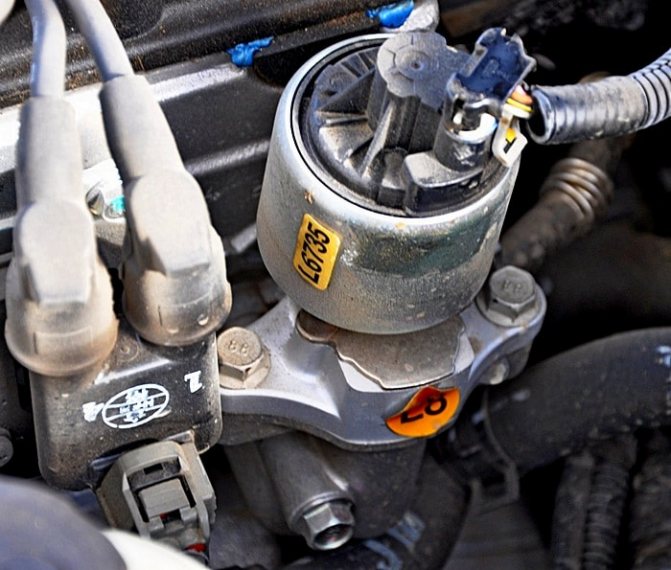
EGR valve - what is it for and can it just be removed?
Content
The EGR valve is one of those devices that is responsible for lower exhaust emissions, and at the same time one of those that causes the most problems. Breakdowns happen relatively often, and the newer the engine, the more expensive the part. Expenses are PLN 1000 or more. Therefore, many people choose to remove or disable the EGR valve.
The EGR valve is a part of the EGR system that is responsible for opening and closing the flow of exhaust gases through the connecting pipe between the exhaust and intake systems. His work is aimed at decrease in oxygen content in the airwhich is fed into the cylinders, thereby lowering the temperature and slowing down the combustion process. This, in turn, reduces the emission of nitrogen oxides (NOx). In modern vehicles, the EGR valve is an integral part of all engine equipment that directly affects the combustion process. Without it, the control computer would be deprived of one of the tools with which it can set, for example, the mentioned temperature in the cylinder.
The EGR valve does not reduce power while it is in operation.
It is generally accepted that the EGR valve is responsible for reducing engine power. The proof of this - at least in older designs - is the better response to gas addition after plugging or removing the EGR valve. Some people, however, confuse two things here - maximum power with subjective sensations.
Well mock The engine reaches its maximum maximum when the accelerator pedal is pressed to the floor - Throttle valve is fully open. In this situation, the EGR valve remains closed, i.e. does not let exhaust gases into the intake air. So there is no doubt that this affects the reduction in maximum power. The situation is different at partial load, where some of the exhaust gases pass through the EGR system and return to the engine. However, then we can talk not so much about a decrease in maximum power, but about a negative feeling, which consists in a decrease in the response to the addition of gas. Kind of like stepping on the gas. To clarify the situation - when the EGR valve is eliminated by the same method of partially opening the throttle, the engine can accelerate more readily.
Talk about maximum power reduction we can only when the EGR valve is damaged. As a result of severe contamination, the valve stops closing at some point. This means that no matter how open the throttle valve is, some of the exhaust gases enter the intake system. And then, in fact, the engine may not produce full power.
Why is the EGR clogged?
Like every part responsible for the supply of gases, the EGR valve also gets dirty over time. A plaque is deposited there, which hardens under the influence of high temperature, creating a hard-to-remove crust. Moreover, when, for example, the combustion process does not go smoothly or when the engine oil burns out, the accumulation of deposits fouls the valve even faster. It's just inevitable, so too The exhaust gas recirculation valve is a part that needs to be cleaned periodically. However, this is only done when problems start to arise.
Blind it, remove it, turn it off
In addition to the obvious and only correct repair of the EGR valve, i.e. cleaning it or - if nothing works - replacing it with a new one, car users and mechanics practice three illegal and unartistic methods of solving the problem.
- Plug the EGR valve it consists in mechanically closing its passage and thus permanently preventing the operation of the system. Very often, as a result of the operation of various sensors, the engine ECU detects an error, signaling it with the Check Engine indicator.
- Removing the EGR valve and replace it with the so-called bypass, i.e. an element that is similar in design, but does not allow exhaust gases to enter the intake system.
- Electronic shutdown from the operation of the EGR valve. This is only possible with electronically controlled valves.
Sometimes one of the first two methods is used in combination with the third, because the engine control unit will always detect mechanical action on the EGR valve. Therefore, in many engines - after plugging or removing the EGR valve - you still have to “deceive” the controller.
Which of these methods gives positive results? If we talk about the effects in the form of better engine performance and the absence of problems with EGR, then everyone. Provided that it is carried out correctly, i.e. the change in engine management is also taken into account. Contrary to what appears to be the only possible correct EGR system from engine operation in the electronic system, because mechanical intervention does not affect the operation of the engine computer. Works and works properly only in older cars.
Unfortunately, tampering with the EGR is illegalbecause it leads to an increase in exhaust emissions. We are talking here only about theory and law, because this will not always be the result. A rewritten engine management program that includes turning off the EGR valve can bring better results, including for the environment, than replacing it with a new one.
Of course, it is best to replace the EGR valve with a new one without interfering with the operation of the engine at all. Remembering the problems you had with it, regularly - every tens of thousands of miles - you should clean it before large hardened deposits appear on it again.

